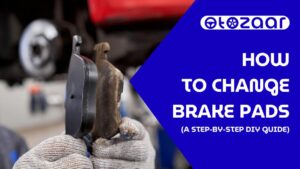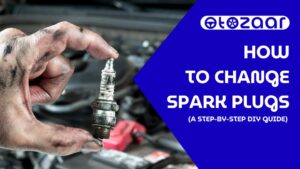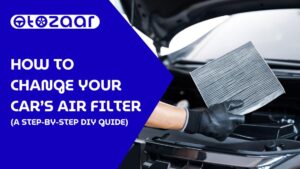With the gradual inflation of product prices every year, buying a new car can be expensive for many people. In this practical case, it is important to take care of the car you already have and ensure its longevity and consistent performance. Maintaining your car can be demanding and effortful, but it’s not something you need to have a mechanical genius in. You can easily perform routine maintenance of your car just by knowing the basics about what your car actually needs.
Here is your ultimate DIY car maintenance checklist that will tell you everything about how to take care of your car in the best possible way!
Car Maintenance
Importance of Punctuality in Car Maintenance
- Regular car maintenance is important in order to ensure that all crucial components of the car are functional and in working condition.
- Many components of the car are pivotal in the operation and safety of the vehicle. These include fuel oil, coolant, the battery, brakes, and clutch. These components wear out in course of time, especially faster when you drive your car too frequently and for many miles. Their condition can also decline if you don’t use your vehicle at all. In either case, proper replacement and maintenance of these components is required.
- If you ever think of reselling your car, you will be able to ask for the best price if your vehicle is well-maintained and in top-running condition.
Impact of Neglecting Car Maintenance
- Effect on Vehicle Life: Ignorance of the car’s maintenance requirement will lead to the deterioration of its components such as engine oil and brakes. As oil deteriorates, its capacity to lubricate the car engine declines. This might lead to engine failure, considerably cutting down the life of your vehicle. Similarly, when brake pads wear out, their ability to bring the vehicle to a stop declines, thus compromising the safety of passengers and drivers.
- Effect on Insurance: Regular car maintenance cost is an expected expense of the customer, and hence is not covered by insurance agencies. Car insurance is also significantly affected due to poor maintenance. If the insurance company finds that maintenance is direful, they might not cover the damage or even increase your premium. In case of an accident due to poor maintenance reasons, only the driver is liable for the damages incurred.
- Major Repair Costs Due to Lack of Maintenance: Lack of maintenance can eventually lead to heavy repair costs. The more you neglect you can maintenance, the heavier will your repair expense be. For example, engine oil needs be changed regularly. Failing to do so will lead to formation of sludge in the engine, and its repair will be expensive. Similarly, the transmission, clutch and brake systems of the car also need timely maintenance. Some repairs are so complex and expensive that some automobile repair service centers reject working on them.
The Perfect Maintenance Guide for Your Car
The components of your car demand varied degrees of upkeep and maintenance. Some components need monthly checks, while some need annual ones. Some components need to be maintained occasionally.
Here is your most comprehensive DIY car maintenance checklist that will help you keep your car in its best possible shape.
1. Important Monthly Checks for Your Car
| Component of Car | Maintenance Guidelines |
|---|---|
| Motor/Engine Oil |
|
| Tires |
|
| Headlights & Brake Lights |
|
| Wiper Blades |
|
| Windshield |
|
| Autobody |
|
2. Car Maintenance Checks on A Three-Month Basis
| Component of Car | Maintenance Guidelines |
|---|---|
| Motor/Engine Oil |
|
| Engine & Radiotor |
|
| Battery |
|
| Transmission Fluid |
|
| Brakes & Doors |
|
Car Maintenance Checks to Be Done Every Six Months
| Component of Car | Maintenance Guidelines |
|---|---|
| Wiper Blades |
|
| Coolant |
|
| Suspension & Steering |
|
| Tires |
|
| Brake Fluid |
|
| Exhaust System |
|
Car Maintenance Checklist to Be Followed Annually
| Component of Car | Maintenance Guidelines |
|---|---|
| Engine Air Filter |
|
| Tires |
|
| Steering System |
|
| Cabin Air Filter |
|
| Fuel System |
|
| Autobody |
|
5. Occasional Car Maintenance Checks
Here are some additional checks that you can perform as and when needed to keep your car in excellent condition:
- Spare parts for many car models can’t be promptly made available all the time. In such cases, you must keep spares for headlights and tail lights in store in case they’re burnt or broken.
- The wheel alignment of cars is often disturbed when you hit a big speed breaker or a pothole. You must check for the same in order to avoid faulty driving.
- If your car doesn’t start up properly, it probably means the engine is misfiring. You can check the spark plugs in this case and get them replaced if they are worn out.
- Make sure all the fluid levels in the car are sufficient. Lower fluid levels can cause noises due to the grinding of parts and transmission faults in the vehicle.
- Maintain a proper record wherein you note down all the completed maintenance checks and the checks that need to be done in the future.
Troubleshooting Common Problems
Caring for the car is knowing what can go wrong, and one is constantly on the lookout to be able to identify when something is wrong with the car. Here are some common issues and their troubleshooting steps to help you diagnose and potentially resolve simple problems before they require major repairs:Here are some common issues and their troubleshooting steps to help you diagnose and potentially resolve simple problems before they require major repairs:
Strange Noises:
- Squealing under the hood: This could be getting weak belts or loose serpentine belts which not only affects the functionality of the engine but also the accessories it powers. The belt is also important, with regard both to its condition and tightness.
- Grinding when braking: This sometimes indicates that your brake pads are worn and that you require new ones to be fitted .
- Knocking from the engine: This could be as a result of having used the wrong kind of fuel or something as complex as a defective rod bearing.
Leaks:
- Oil leaks: Look for areas of darkness beneath the vehicle. These are some of the parts that could be a source of the oil leak: oil pan, the valve cover gaskets, and the oil filter.
- Coolant leaks: If the fluid is bright green or orange, it signifies that there is a coolant leak. Please look for any signs of cracks or leaks on the part of the car that contains the radiator, the hoses, and the water pump.
Electrical Issues:
- Headlights or interior lights dimming or flickering: Check the battery voltage and diagnose the performance of the alternator as well to ensure it is sufficiently performing its duties.
- Car won’t start: Check that the battery terminals are free of grime and corrosion and are tightly connected to the positive and negative poles of the battery. Perhaps, a jump start will do the trick, but if it seem the car hardly starts frequently, then the battery may need to be replaced.
Overheating:
- If your car has some issues with the temperature, find out whether it has enough coolant and look at the state of the cooling system. Further driving should be prohibited until the matter is resolved so as not to complicate the situation and cause further damage to the engine.
Vibrations:
- Steering wheel shakes: Examine wheel alignment and make sure you check the balance of the tires as well. Even the tread of the tires can also be a cause for vibration issues and something as simple as tires with different levels of wear can bring this on.
- Vibration at high speeds: The CV joints and axles should be checked for any signs of wear.
Maintenance Checks for Cars with A Four-Wheel-Drive System:
The Four-Wheel-Drive (4WD) system of driving allows the powertrain of the car to supply torque to all four wheels simultaneously. This system is used in almost all modern cars in place of the older 2WD system because it helps improve the grip of the tires (traction) with the ground surface on unusual and dangerous driving conditions, such as rocky terrain, snow-clad roads, and slippery roads (during rainfall). The weight distribution and performance in 4WD cars are also better than the 2WD ones.
Most 4WD Systems are equipped with the “Service 4WD System” warning light that appears when the software of the car has encountered a major problem in the vehicle.
Some of the most common problems seen in 4WD cars include:
- Electrical Issues: Caused by defective sensors, loose wire connections, short circuits, and blown fuses in cars.
- Mechanical Failures: Occur due to mechanical damage or wearing of components in the car.
- Software Glitches: Caused due to the presence of some bug or error in the automobile software.
DIY Fixes & Preventive Measures for 4WD Users:
- You can use On-Board Diagnostics (OBD) to troubleshoot and scan the problems of the car in detail.
- You should visually inspect the interior and exterior of the car for evident signs of damage.
- Always check the fuses, wires, and fluids in the car to ensure their proper working condition and get any of the faulty components replaced.
- Follow a proper car maintenance schedule in order to prevent hassle due to problems in the vehicle later on.
- Avoid sudden accelerations and brakes that can put unwanted strain on the powertrain.
Always consider the seasonal and roadway conditions before taking your car out for a drive.
Conclusion
Taking proper care of each and every component of your car is important in maximizing its life and performance. Neglecting the same can lead to expensive repairs and compromises in the safety of the riders. You can easily keep a check on your car’s health by following this thorough checklist of maintenance tips.
In short, this comprehensive and detailed guide to car maintenance proves to be helpful for both DIYers and people who prefer to hire a professional for all the technical work. The end goal is one and the same: keeping your car in its best possible shape throughout the year!





